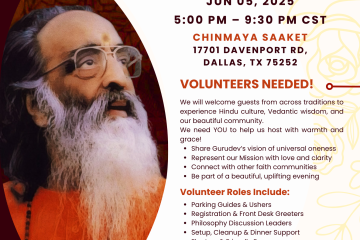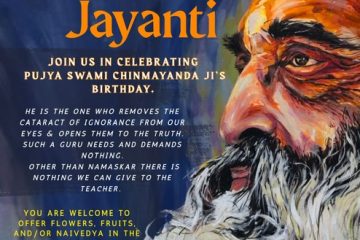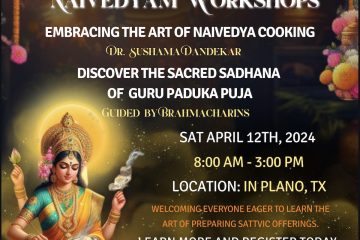Vishnu Sahasranamam – Introduction
Jan. 28 – Feb. 01
Click here for the audio discourses ![]()
During the discourses on Vishnu Sahasranamam held at Chinmaya Chitrakoot, Swami Sarveshananda provided an extensive introduction to this treatise by going over the context in which the mantras were revealed. Composed by Shri Veda Vyasa, we encounter this sacred hymn in the Mahabharata. At the end of the war, Shri Yudhisthira, the eldest of the Pandavas, approached Bheeshma Pitamaha who was lying on a bed of arrows awaiting the sacred hour of his departure and asked him six questions:
Kimékam daivatam loke kim vápyekam parãyanam Sthuvantah kam kamarchanda prapnuyur mãnavã shubam Ko dharma sarva dharmãnam bhavatha paramo mathaha Kim japan muchyathé jantur janma samsãra bandhanãth
- kim (Who) ekam (alone) daivatam (is the greatest Lord) loke (in the world)?
- kim (Who) ekam (alone) paraayanam (refuge for all?
- sthuvantah (By glorifying) kam (whom) can manavah (man) reach shubam ( Auspiciousness)?
- archantah (By worshipping) whom can a man reach auspiciousness, peace and prosperity)?
- ko (What) is, in thy opinion, the greatest Dharma?
- kim (By) doing japa of what can jantu (creatures) mutchyate (go beyond) bandhanãth the bonds of samsãra (world)?
After answering all the six questions Shri Bheeshma narrated the thousand names of Lord Vishnu and thus introduced the sacred hymn in the Mahabharata.


